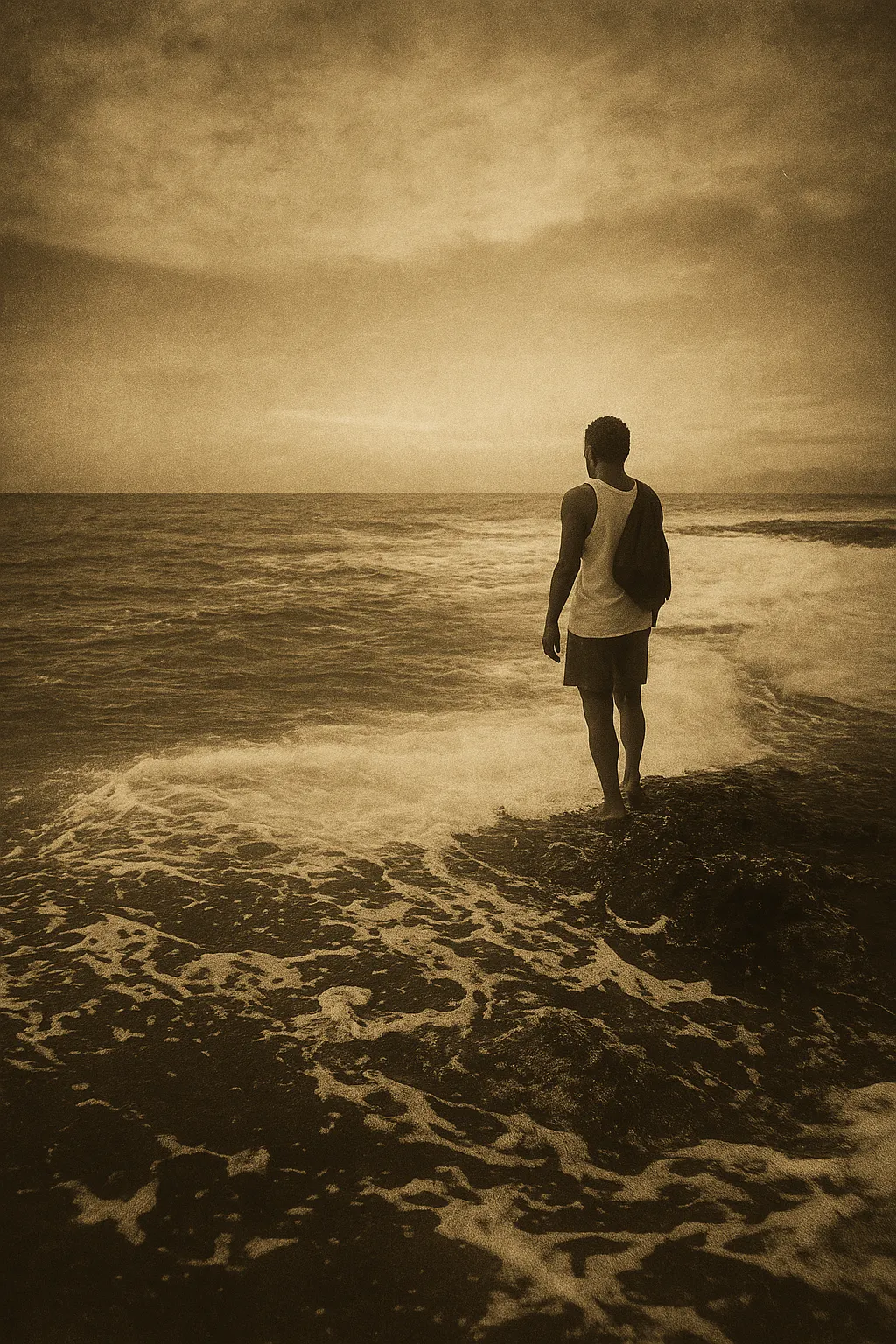Last Hawaiian of Kalalau Valley
“I was born in Kalalau. There were about 50 families there. We all grew taro. We all fished. We didn’t need much else.”
– John Hanohano Pa
Out in the forgotten folds of Kaua‘i’s Nā Pali Coast — past the reach of roads, where cliffs rise like the ribs of ancient gods — there once lived a boy. Born in 1888, in a thatched hut under the dripping green of Kalalau Valley, this boy would grow to become the keeper of its memory. His name was John Hanohano Pa. And he was the last. The final child born into that deep-channeled place before the great silence came. Before Kalalau fell still.
They called him Hanohano — noble, honored. He came from two worlds: his father “Pa” Kahoohanohano had roots in Kāʻanapali, Maui; his mother, Wahine-i-Keouli Milikaʻa Pa, was born of the valley itself. They were farmers, fishers, people of the land. John grew up in the old rhythm — barefoot, sun-warmed, clothed only in a malo most days, and fluent only in Hawaiian until he was ten. The valley was a womb. It taught him taro and tide, moon and rain, fish and reef and reef and fish again.
When he was a boy, the valley was full — fifty families, he said. Lo‘i filled the flats. Pilgrim chants danced in the wind. They built hale with pili grass and reinforced them with hau poles when the storms came. They brewed ʻawa, they made ʻōkolehao from ti root, they fished by moonlight. If you had taro, you had everything. Coffee and soap came by trade, ferried out in summer when the sea softened. Hanohano remembered paddling to Hanalei, Ni‘ihau, Waimea — barter and aloha between valleys, between islands. Nothing wasted. Nothing taken without offering.
But the valley changed. By the early 1900s, Kalalau began to empty. The elders passed. The youth were drawn away — to sugar work, to schools, to laws written in English. Wild cattle crushed the terraces. Land was claimed by ranchers. Trails faded. And by 1919, the valley was quiet. Empty, but for one family — John’s. “We were the last to leave,” he said.
And though he left, the valley never left him. John Hanohano Pa became a fisherman of great renown. He lived in Wainiha and Hā‘ena, but fished all along Nā Pali by sampan. He passed knowledge to kids like Charles “Kininani” Chu and Wayne Harada. He took them to Kalalau, to Hanakāpīʻai, to Nuʻalolo Kai. They pulled nets, they fed sharks. They learned not just to fish, but to listen.
There’s a story they tell — one of those murky, maybe-true tales you only hear after a few shells of ʻawa. Hanohano, off Kalalau, once faced down a massive mano. The boys reached for rifles. He waved them off. Took the largest bonefish in the net, offered it to the shark, and watched it vanish with the current. “You respect them, they watch over you.” No fear. Just balance.
He ran hukilau at Hā‘ena, long ropes strung with ti leaves to guide akule to shore. He was kilo — the watcher, the caller. He would signal when the net was ready. The people came. They shared. Nobody went home hungry. Fish divided by families. Harmony preserved.
And deep within those years were stories older than even Kalalau.
The Stone That Remembered
They say one of John’s ancestors fished a crying stone from the sea. It hummed with memory. When held, it whispered the names of ancestors long gone. They buried it beneath Kalalau, beneath a grove of red ti. When Hanohano was born, it rained five days. The midwife said, “The stone is breathing again.” Some believe that stone still breathes. Some say John carried it in his chest.
The Net of Night
Another tale. A net woven of starlight was cast once, long before the ali‘i ruled. It caught no fish, only visions. One pull brought up a black coral spike, carved with four glyphs no one could read. A kahuna held it, looked at the boy nearby, and said, “This one won’t lead. He’ll remember.” And so began the Hanohano line.
Back in the modern day, John fished with motorboats, yes — a 26-foot sampan out of Wainiha — but he never stopped using chants, never disrespected the fish or the sea. He warned the keiki: take only what you need. Mind the spawning grounds. Offer the first catch to the stones.
He lived through wars, floods, and statehood. He served as a police officer. He guided trail parties across Maunahina Ridge. He married twice — Mae and Julia. Raised 10 kids. In the 1957 tsunami, his house was swept out to sea. His wife and daughter survived by gripping a tree. He rebuilt. Kept fishing.
In his 70s, he was still fishing, still teaching. In 1966, he gave interviews. In 1949, his memories were recorded in a Bishop Museum manuscript. In 1971, at age 82, he passed.
And yet he never really left.
Today, when the wind shifts in Kalalau and the cliffs begin to murmur, you might hear a voice. A chant. A splash. A memory rising like mist through taro. John Hanohano Pa — fisherman, farmer, father, guardian — the last born of Kalalau. The memory of the valley made flesh.
Legacy Lives in the Land
From Haʻena’s community-managed fisheries to the way the keiki still call in akule with ti leaves, John’s spirit moves. He is in the net. In the swell. In every cliff that watches over Kalalau. He isn’t gone. He’s gone fishing.
E mālama. E hoʻi mai. E hoʻihoʻi.
Protect it. Return. Restore.

Leave a Reply